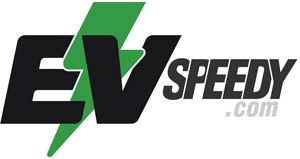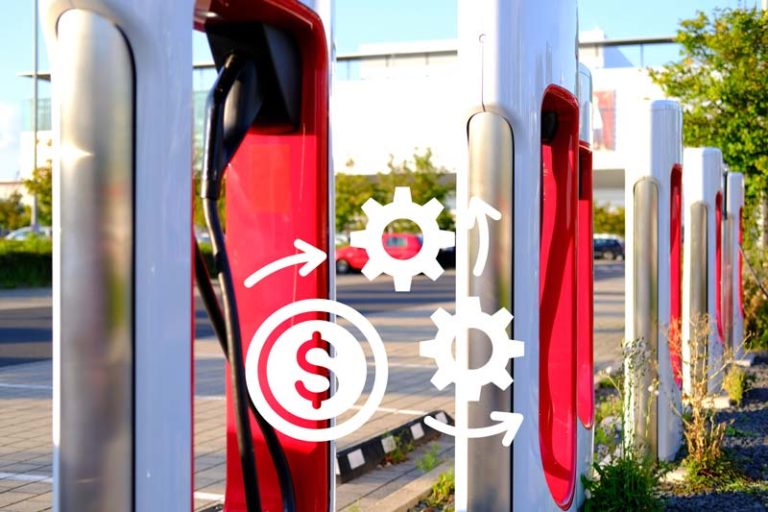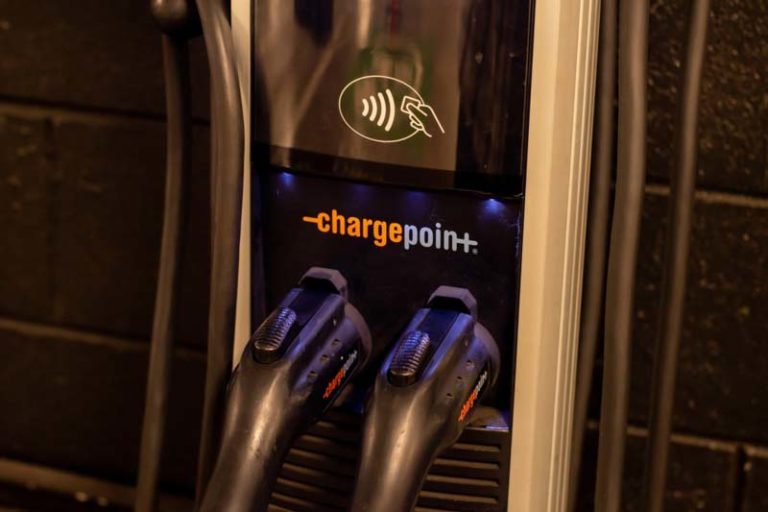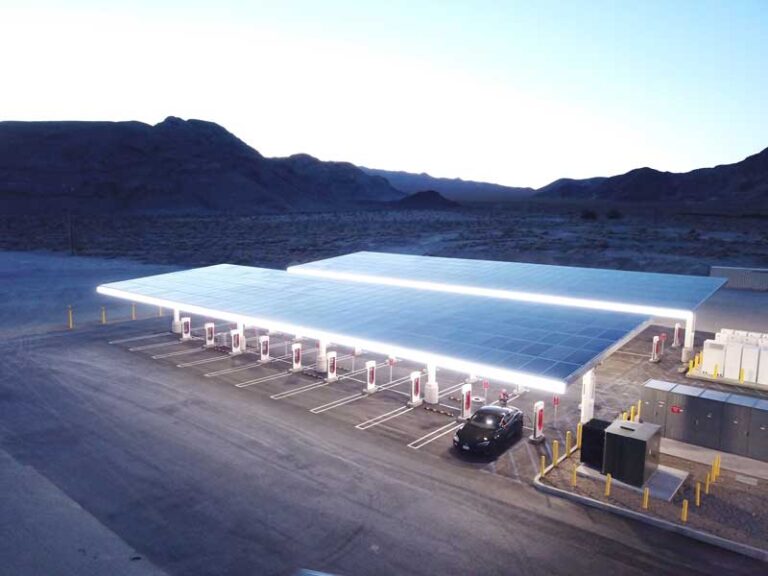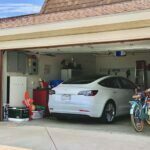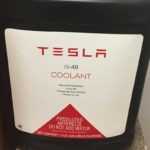In this comprehensive guide, I explore the potential outlays involved in establishing a Tesla destination charger or a Tesla Supercharging station for your business. I’ll also evaluate the costs associated with other manufacturers’ charging stations and the elements that influence them.
I also shared information you need to determine the most suitable and cost-effective charging solution for your business. I’ll help you understand the difference between a Tesla Destination charger and a Supercharger, their pricing structures, and how they stand in comparison with other manufacturers’ offerings.
So, whether you’re a business owner considering an investment in EV charging stations, or an EV enthusiast interested in the economics of charging infrastructure, this article will serve as your comprehensive guide.
- Unveiling the Real Cost: Setting Up a Public EV Charging Station
- How Much Does It Cost To Install an EV Charging Station?
- How Much Does It Cost To Install a Level 3 Charging Station?
- Can I Install a Level 3 Charging Station at Home?
- Are Level 3 Charging Stations the Fastest?
- Are Level 3 Charging Stations Free To Use?
- What Makes the Tesla Destination Charger and Supercharger Different?
- What Are the Different Types of EV Charging Stations Available for Businesses?
- How Much Does It Cost to Install a Level 2 Charging Station for My Business?
- Are There Any Government Incentives Available for Installing EV Charging Stations?
- What Is the Difference Between a Tesla Destination Charger and a Supercharger?
- How Can I Convince Tesla to Partner with My Business for Charging Stations?
- Do I Need Special Permits to Install EV Charging Stations?
- Are Level 3 Charging Stations Suitable for Home Use?
- What Are the Fastest Charging Stations Available for Electric Vehicles?
- Can I Install Multiple Types of Charging Stations at My Business?
Unveiling the Real Cost: Setting Up a Public EV Charging Station
As the world rapidly embraces electric vehicles (EVs), the need for public charging infrastructure is intensifying. Companies worldwide, including market leader Tesla, are investing in EV charging stations to cater to this growing demand. So, how much does it cost to build a charging station for an electric vehicle?
Installing a public EV charging station could cost anywhere from a couple of thousand dollars to $100,000—depending on the brand. The charger’s price and permit costs are some of the associated expenditures. For example, Tesla’s Supercharger is on the higher side of the range.
How Much Does a Tesla Destination Charger Cost?
A Tesla Destination charger costs roughly $500. This price doesn’t cover the costs of permits, labor, and other relevant expenses. However, consider that the price may rise if extra work is required at your location to satisfy the Destination charging requirements.
Destination chargers are those that the Charging Partners of Tesla install. In most cases, these partners are businesses or landowners who decide to install the Tesla Wall Connector on their property and allow it to be used by Tesla owners. In terms of Tesla charging station installation cost, this would be the most affordable option.
Destination chargers can be a perfect choice for hotels or restaurants, where people are likely to spend a few hours. Customers can, for example, spend the night knowing that their EV is charging in the parking lot.
Depending on the charge left on your Tesla, it can take up to 12 hours for your car to be fully charged with a destination charger.
Several things determine the cost. First and foremost, the location is critical. Tesla will consider how often Tesla owners visit your area if the traffic is sufficient and whether your site requires any extra preparation to accommodate the Destination charger. There’s no point in setting up public chargers in areas where few Teslas (or other vehicles) travel.
How Much Will a Tesla Supercharging Station Cost Me?
A Tesla Supercharging station may cause you between $100,000 and $150,000—a lot more than the Destination charger. This price includes the price of the unit and the installation and potential power supply adjustment charges.
The Tesla Supercharger has its name for a reason. These are high-speed solutions for Tesla car owners to charge their EVs. This type of charger is the primary network of EV charging stations by Tesla.
They’re ultra-powered 480V charging stations that allow Tesla owners to charge their cars in less than one hour, which is quite a remarkable achievement. They’re one of the best options for those who like to travel long distances and want to take quick breaks without having to stop for 12 hours every few hundred miles.
| 0 to SOC (MILES) | 0 to SOC (%) | TIME | CHARGING SPEED (KW | MI/HR) |
| 6 | 2% | 0 mins 0 secs | 0 kW | 0 mi/hr |
| 36 | 12% | 2 mins 26 secs | 250kW | 1,068 mi/hr |
| 60 | 20% | 4 mins 1 sec | 244kW | 1,044 mi/hr |
| 150 | 50% | 11 mins 22 secs | 134kW | 574 mi/hr |
| 240 | 80% | 26 mins 49 secs | 50kW | 213 mi/hr |
| 270 | 90% | 37 mins 48 secs | 28kW | 121 mi/hr |
| 296 | 97% | 54 mins 05 secs | 11kW| 48 mi/hr |
This charging model comes with a special function to protect your vehicle from damage. It charges the battery up to 80 percent in just 40 minutes, and the charging rate slows down for the remaining 20 percent.
However, while this charger is truly unique and valuable, it does cost quite a lot. It’s almost impossible to tell in advance how much it would cost your business to own a Tesla Supercharger.
While Tesla does have a special partnership program, the chargers are placed in different locations upon request. But before that, Tesla needs to verify that the Tesla charger installation cost is justified. That means there must be sufficient Tesla traffic at the location.
Even if Tesla is ready to partner up with you, you’re very likely to have to spend a lot of money. The costs include everything from purchase and installation to supporting the power and maintenance of the Supercharger.
How Much Does It Cost To Install A Tesla Supercharger?
How much does a supercharger cost to install? As discussed earlier, it can be estimated that the total price to purchase and install a Tesla Supercharger can be between $100,000 and $150,000, a lot more than the Destination charger.
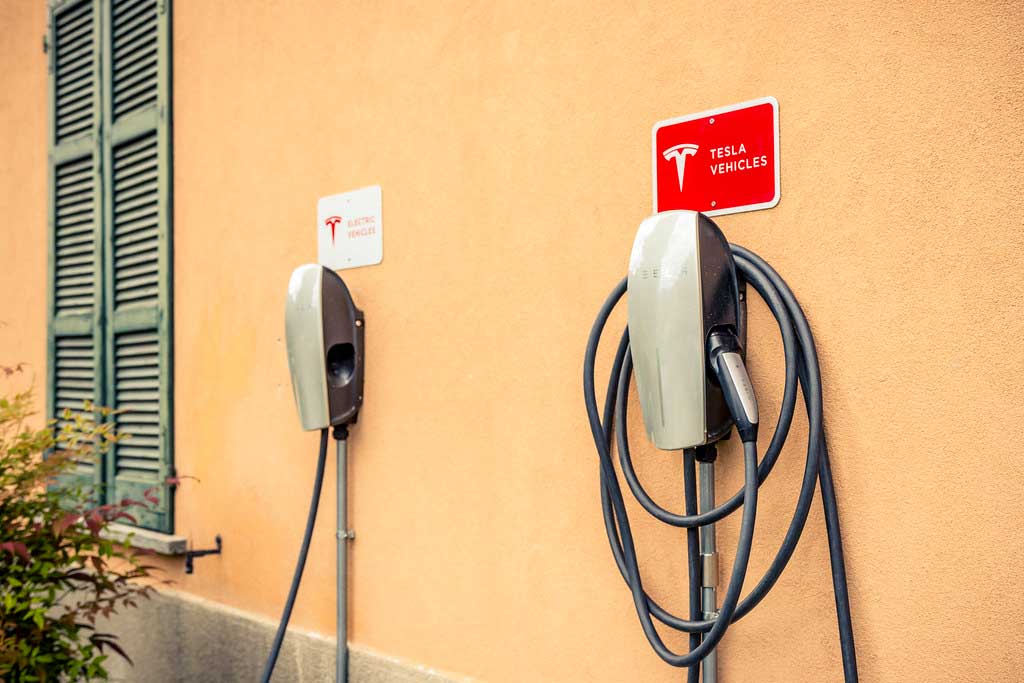
How Much Does It Cost To Install an EV Charging Station?
Installing an EV charging station may cost you from $5,000 to $150,000, depending on the type and power you choose. Aside from the charging station equipment, you may incur other charges such as installation, power supply adjustment, permits, and other fees.
Tesla isn’t the only one manufacturing EV station hardware, as it’s available from various manufacturers, each with its own set of features and designs. The price of a unit is influenced by several factors, including the charging level, ports, mounting system, and optional features.
Speaking of which; I wrote a related article and discussed if one needs a permit for a Tesla charger. This might also be helpful to you. Check it out!
Once you’ve decided on the unit you want to install, you should consider the permits, location, and labor expenses. Installing a simple lower-level model will be less expensive in terms of needed permissions and labor costs, with the price increasing as more power and features are added.
If you’re installing a station in an area where they aren’t common, you might need to modify or even upgrade the electrical panel for your station to work. You’ll possibly have to hire a utility company, or electricians. This increases the cost to install a public EV charging station drastically.
To install a public EV station, you’ll need to acquire a special permit from the government. Different states call for various documents and costs. The permit costs can start from US$1,000—they may increase depending on the technicalities.
You should also examine the accessibility standards in your area before constructing a station. It’s essential to consult with your local authorities on this matter to see whether you must fulfill any of the requirements, as these differ from state to state.
If there are other nearby accessible charging stations, you may be able to avoid the additional costs of added infrastructure.
How Much Does It Cost To Install a Level 3 Charging Station?
Installing a level 3 charging station will cost at least $50,000. The parts and equipment necessary will cost between $20,000 and $50,000, and the labor costs alone can exceed $50,000. Be prepared to spend at least $50,000 to install a level 3 charging station.
Can I Install a Level 3 Charging Station at Home?
Level 3 charging stations are not suitable for home use in most situations. The 480-volt power supply is generally unavailable in residential networks, so adjusting your residential power grid to install a level 3 charging station would be cost-prohibitive.
Most residential power grids allow for a relatively easy connection to a 240-volt charger, such as level 2 chargers. However, upgrading the entire electrical network only to accommodate a residential level 3 charging station would cost tens of thousands of dollars.
So, on top of paying $20,000 to $50,000 for your equipment and parts, plus $50,000 for labor, you would also have to spend tens of thousands of dollars upgrading your residential grid to accommodate 480-volt chargers.
You could easily end up spending well over $100,000 to upgrade your residential neighborhood and install a level 3 charging station at home. This makes the overall cost of charging an electric vehicle extremely expensive.
In addition to extreme installation costs, having a level 3 charger at home may not be a good idea because it’ll hurt your battery. A study has shown that relying on level 3 or DC chargers for your vehicle will ultimately cause the battery to deteriorate faster.
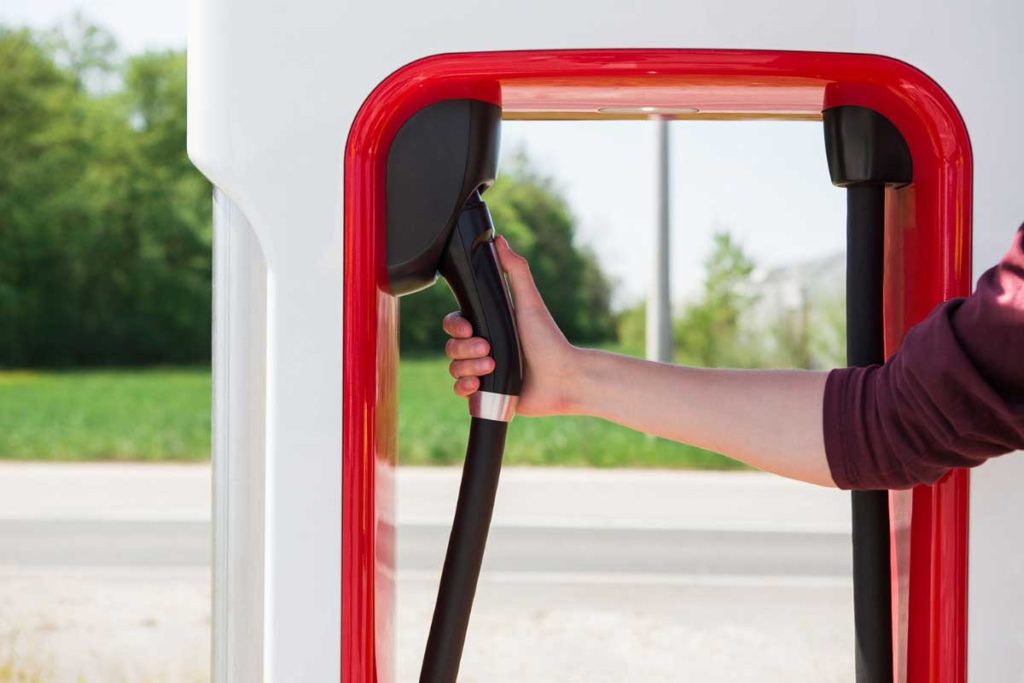
Are Level 3 Charging Stations the Fastest?
Level 4 charging stations are the fastest way to recharge your electric vehicle. A level 4 charging station can give you an 80% charge in under 20 minutes, making them significantly faster than level 1, 2 and 3 stations.
If you’re looking for a faster way to charge your electric vehicle than with a level 4 charging station, I’m sorry to disappoint. Level 4 charging stations are the fastest EV stations available as of 2023.
| Level 1 | Level 2 | Level 3 | |
| Voltage | 120V | 208V or 240V | 208V or 480V |
| Amps | 12-16 Amps | 12-80 Amps | 60-125 Amps |
| Charging Loads | 1.4 to 1.9 KW | 2.5 to 19.2 KW | 50-90 KW |
| Charging Time | 3-5 miles (4.8-8 km of range per hour) | 10-20 miles (16-32 km of range per hour) | 80% of charge in under 30 minutes. |
| Price Per Mile | 2-6 cents per mile | 2-6 cents per mile | 12-25 cents per mile |
But the numbers alone don’t tell the whole story. For more information on the difference between the three levels, check out the YouTube video below:
Are Level 3 Charging Stations Free To Use?
Unless you have free supercharging miles, Level 3 charging stations aren’t free. In fact, they’re the most expensive way to recharge your electric vehicle. All public level 3 charging stations charge between 12 and 25 cents per mile charged. The only exception is Tesla Superchargers, which are sometimes free for Tesla drivers.
Although some public level 1 and level 2 electric vehicle charging stations may be free, you almost certainly won’t be able to find a public level 3 charging station that is free to use.
Level 3 charging station operators charge high fees for the convenience of quickly charging your electric vehicle and also to offset the huge installation costs.
If you would like to find out who pays for Tesla charging stations and how the whole setup works, check out this related article that I wrote. It explains the whole sequence in detail.
Tesla sometimes offers free charging in its network of Superchargers (level 3 charging stations). They recently offered free charging at specific Superchargers between 7 PM and 10 AM during the holiday travel season. However, this is no longer a regular perk from Tesla, so you shouldn’t rely on it.
Other than Tesla Superchargers, there are no other options for free charging at level 3 stations. If you’re looking for free or affordable public charging, you’ll have to stick to level 1 and 2 charging stations.
What Makes the Tesla Destination Charger and Supercharger Different?
The time necessary to charge the Tesla’s battery is what makes the Tesla Destination charger and Supercharger different. Destination chargers can take up to 12 hours to fully charge a vehicle, whereas the Superchargers take only over an hour to fully charge.
People use destination chargers in places like hotels, where they may spend more time.
Tesla is one of the leading manufacturers of EV charging stations. Known for its colossal interest and dedication toward the electrified vehicles and the industry’s future, Tesla has played an enormous role in the larger adoption of EV chargers throughout the US and worldwide.
The manufacturer mainly works on two types of EV chargers: Tesla Destination charger and Tesla Supercharging station. There are several differences between these two, including the price.
Because of the massive influence of Tesla in the EV industry, it shouldn’t come as a surprise that many companies and businesses are working towards getting a deal with Tesla to install its chargers near their businesses. Still, it’s not as easy of a thing as it might sound.
What Are the Different Types of EV Charging Stations Available for Businesses?
There are several types of EV charging stations suitable for businesses. These include:
- Tesla Destination Charger: Tesla’s slower charging option, ideal for locations where customers are likely to spend a few hours, such as hotels and restaurants.
- Tesla Supercharging Station: These ultra-fast 480V charging stations are designed for Tesla owners on long-distance trips, providing a full charge in about an hour.
- Level 2 Charging Station: A common choice for businesses, level 2 chargers offer a moderate charging speed and are suitable for various locations, from office buildings to shopping centers.
- Level 3 Charging Station (DC Fast Charger): These chargers provide high-speed charging and are often found along highways for quick top-ups during travel.
How Much Does It Cost to Install a Level 2 Charging Station for My Business?
The cost of installing a level 2 charging station can vary widely. On average, you can expect to invest anywhere from a few thousand dollars to over $20,000. Factors that influence the cost include the charging capacity of the station, any necessary electrical upgrades, and installation complexity. It’s essential to obtain quotes from experienced installers to get an accurate estimate.
Are There Any Government Incentives Available for Installing EV Charging Stations?
There are government incentives and grants available to businesses that install EV charging stations. These incentives aim to promote the adoption of electric vehicles and charging infrastructure.
Depending on your location and specific circumstances, you may qualify for tax credits, rebates, or grants. Be sure to research available programs and consult with your local authorities to take advantage of these opportunities.
What Is the Difference Between a Tesla Destination Charger and a Supercharger?
The primary difference between a Tesla Destination charger and a Supercharger is the charging speed.
Destination chargers are slower, typically providing a full charge over several hours. They are best suited for places where customers spend extended periods, such as hotels.
In contrast, Superchargers are high-speed stations designed for fast charging during long-distance travel, offering a full charge in about an hour.
How Can I Convince Tesla to Partner with My Business for Charging Stations?
Convincing Tesla to partner with your business for charging stations requires demonstrating the demand for EV charging in your area.
You’ll need to show that there is a significant number of Tesla owners visiting your location. Additionally, be prepared to cover installation, power supply upgrades, and ongoing maintenance costs. Contact Tesla directly to discuss partnership opportunities, find out the Tesla charging station cost and outline the benefits your business can offer to Tesla owners.
Do I Need Special Permits to Install EV Charging Stations?
Installing EV charging stations typically requires special permits from local government authorities.
Permit requirements and costs vary by location and can range from a few hundred to several thousand dollars. It’s essential to consult with your local authorities to understand the specific permit requirements and ensure compliance with regulations before proceeding with installation.
Are Level 3 Charging Stations Suitable for Home Use?
Level 3 charging stations, also known as DC fast chargers, are generally not suitable for home use. These chargers require a high-voltage power supply (480V) that is typically unavailable in residential areas.
Additionally, upgrading a residential electrical grid to accommodate level 3 charging can be cost-prohibitive, potentially totaling tens of thousands of dollars.
What Are the Fastest Charging Stations Available for Electric Vehicles?
Level 4 charging stations are the fastest charging option available for electric vehicles. They can provide an 80% charge in under 20 minutes, making them significantly quicker than level 1, 2, and 3 chargers. Level 3 chargers are also fast but not as rapid as level 4 chargers.
Can I Install Multiple Types of Charging Stations at My Business?
Yes, you can install multiple types of charging stations at your business to cater to a broader range of electric vehicle owners. Offering a variety of charging options, such as Tesla Destination chargers, level 2 chargers, and level 3 fast chargers, can attract more customers and enhance the appeal of your business as an EV-friendly destination.
Check out these 20 great gift ideas for yourself or a Tesla fanboy.
Contact Us if you have any questions or queries.
